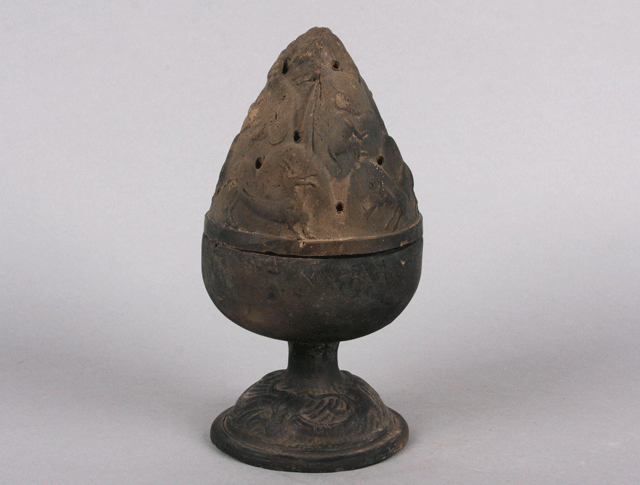
2012.91.34, censer; Han dynasty (206 B.C.–A.D. 220)
Eason Eige Collection; photo by B. Bernard.

2012.91.34, censer; Han dynasty (206 B.C.–A.D. 220)
Eason Eige Collection; photo by B. Bernard.
This two-part censer includes a footed cup to hold the incese and a perforated cover though which smoke could escape. The complete censer measures 8 inches (20 cm) tall. It's an example of the boshanlu or "universal mountain censer" (博山爐) form that became popular in the reign of Emperor Wu of Han (141 to 87 B.C.) and represented a Chinese sacred mountain. The smoke escaping from the holes in the censer top evoked clouds or mist against the mountain.
The ancient Chinese used incense for a variety of purposes, including religion, medicine, and daily life. By the Han dynasty, incense from exotic places was seen as more desirable than that produced locally. It's a good example of what happens as social hierarchies emerge. By claiming superior properties for incense only they could afford, Chinese elites further distanced themselves from commoners. In other words, incense become more than a functional item: it became a status marker.
Another attribute of increasing social complexity is mass production of certain goods by specialists. The censer parts were mold-made and once an artist created the mold, other, less skilled individuals could churn out multiple copies of the censer.
The next image shows the footed cup and cover side by side.
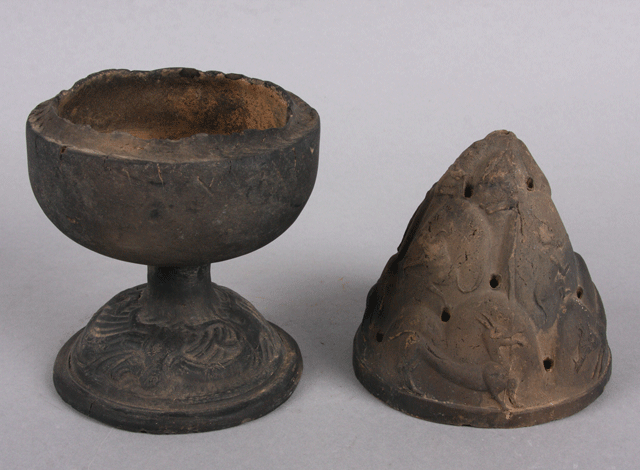
Photo by B. Bernard.
To see a second example of a Han dynasty censer, click
here. Or keep scrolling
down for a closer look at the censer lid, which depicts animals
scampering about the folds of a mountain.
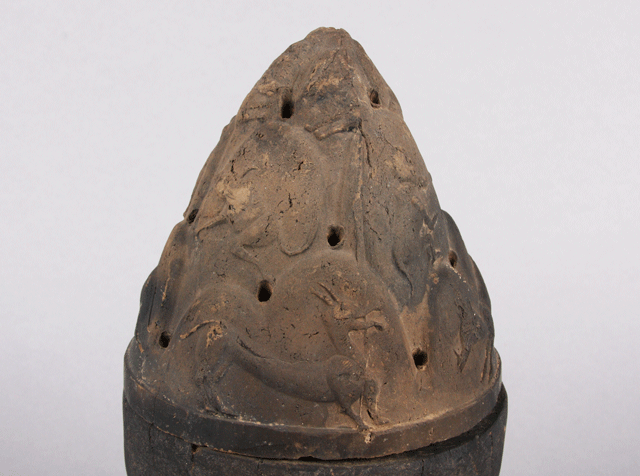
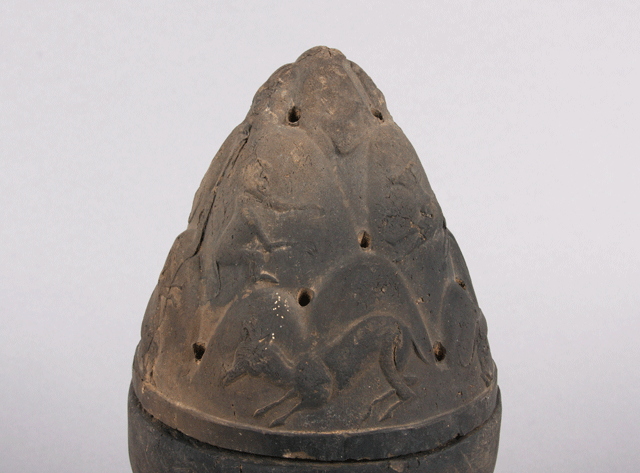
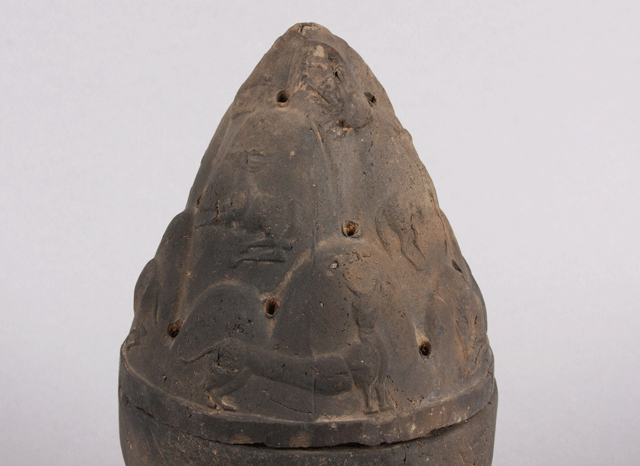
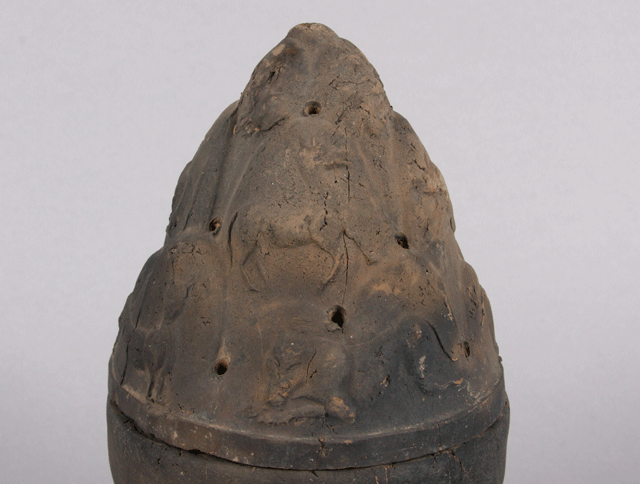
Above four photos by B. Bernard.
See source code for photo credits and copyright information. Page last revised on December 5, 2015. Please report problems to toh@unm.edu